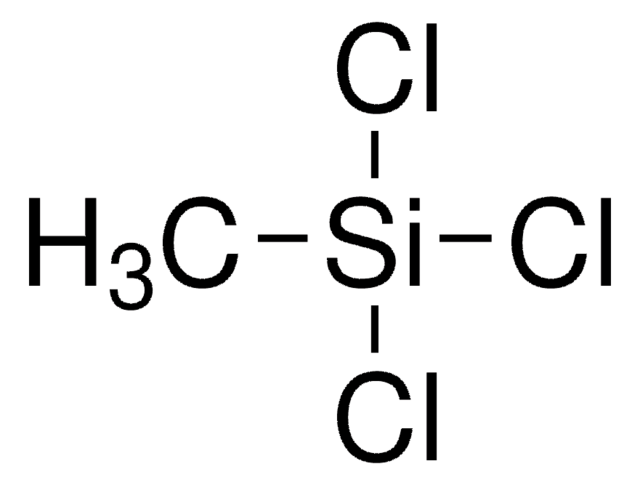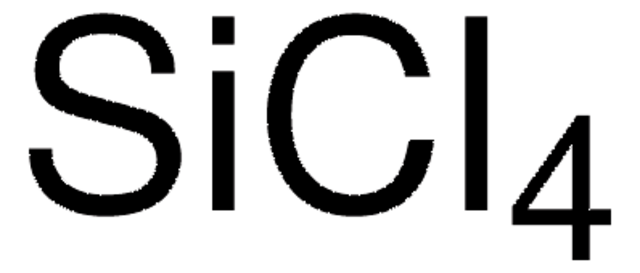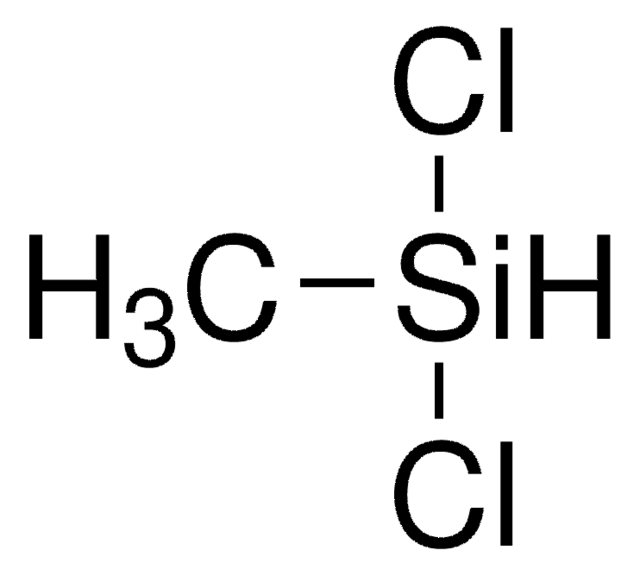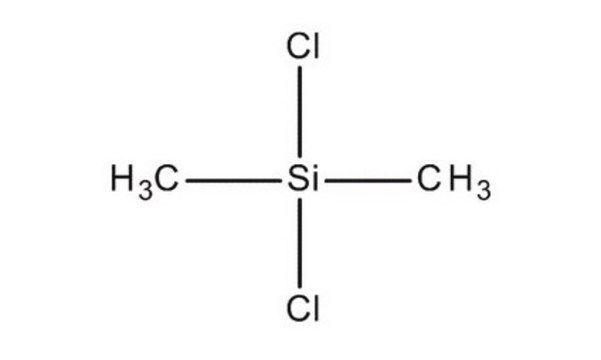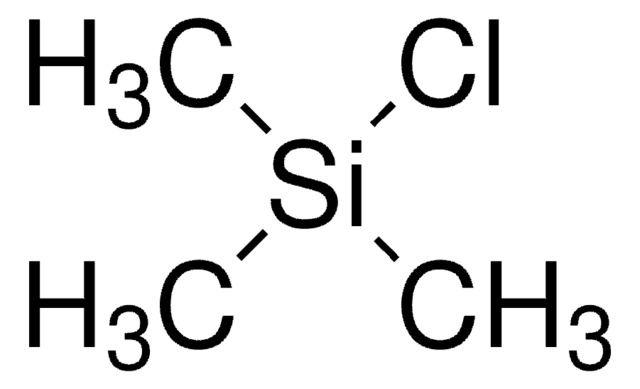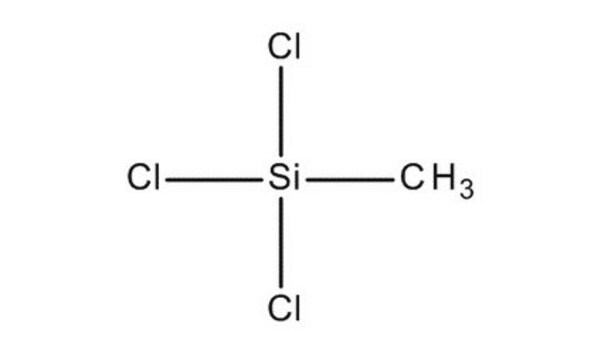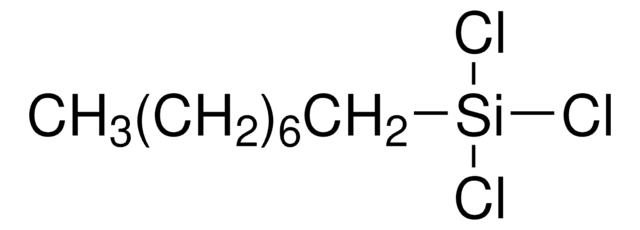M85301
Methyltrichlorosilane
99%
Sinónimos:
MTS, Trichloro(methyl)silane
About This Item
Productos recomendados
densidad de vapor
5.2 (vs air)
Nivel de calidad
presión de vapor
150 mmHg ( 25 °C)
Ensayo
99%
Formulario
liquid
temp. de autoignición
>760 °F
lim. expl.
11.9 %
índice de refracción
n20/D 1.411 (lit.)
bp
66 °C (lit.)
densidad
1.273 g/mL at 25 °C (lit.)
cadena SMILES
C[Si](Cl)(Cl)Cl
InChI
1S/CH3Cl3Si/c1-5(2,3)4/h1H3
Clave InChI
JLUFWMXJHAVVNN-UHFFFAOYSA-N
¿Está buscando productos similares? Visita Guía de comparación de productos
Aplicación
- As a reagent for the surface-functionalization of fabrics and mesoporous materials to increase their hydrophobicity.
- As a source of silicon to synthesize silica doped carbon nanotubes.
Palabra de señalización
Danger
Frases de peligro
Clasificaciones de peligro
Acute Tox. 3 Inhalation - Acute Tox. 4 Dermal - Acute Tox. 4 Oral - Eye Dam. 1 - Flam. Liq. 2 - Skin Corr. 1A - STOT SE 3
Órganos de actuación
Respiratory system
Código de clase de almacenamiento
3 - Flammable liquids
Clase de riesgo para el agua (WGK)
WGK 1
Punto de inflamabilidad (°F)
46.4 °F - closed cup
Punto de inflamabilidad (°C)
8 °C - closed cup
Equipo de protección personal
Faceshields, Gloves, Goggles, type ABEK (EN14387) respirator filter
Elija entre una de las versiones más recientes:
¿Ya tiene este producto?
Encuentre la documentación para los productos que ha comprado recientemente en la Biblioteca de documentos.
Los clientes también vieron
Nuestro equipo de científicos tiene experiencia en todas las áreas de investigación: Ciencias de la vida, Ciencia de los materiales, Síntesis química, Cromatografía, Analítica y muchas otras.
Póngase en contacto con el Servicio técnico
